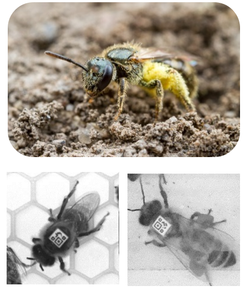Research
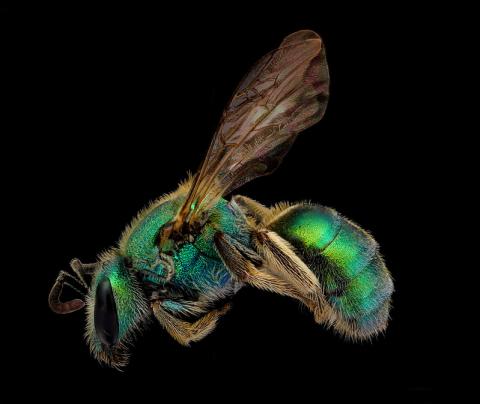
Our research leverages natural variation in social behavior within and across species of bees to understand the mechanisms and consequences of phenotypic plasticity in evolution.
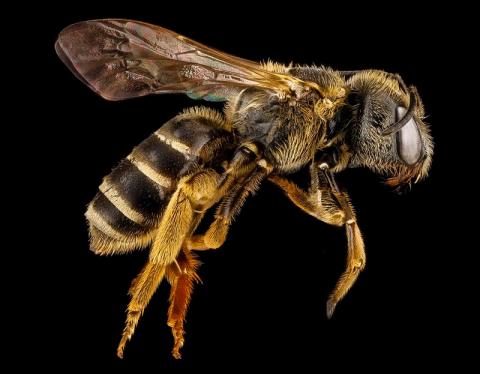
Specifically, we are interested in how plastic traits related to social behavior (e.g., the emergence of queens and workers) have evolved through modification to gene regulatory networks. This work incorporates field, genomic, and computational methods for an organismal and integrative approach to understanding the mechanisms and consequences of phenotypic plasticity, with a special emphasis on social traits and using bees as a model system.
Gene regulatory changes in social evolution
Social bees evolved from solitary ancestors, in which females raised offspring alone. In contrast, social bees raise offspring as a unit, with a reproductively active queen and one or more non-reproductive workers. These queens and workers are excellent examples of phenotypic plasticity, developing from a totipotent genome through differential utilization of the gene regulatory network (e.g., the regulatory connections between transcription factors (TFs) and their target genes). Theory predicts that – much like changes in body plans or cell types – the evolution of social phenotypes from solitary ancestors involved changes in this GRN. We seek to identify key changes in regulatory relationships associated with evolutionary transitions in social phenotypes. In sweat bees, the multiple gains and losses of sociality enable us to ask whether convergent GRN changes underlie these independent evolutionary transitions in social behavior.
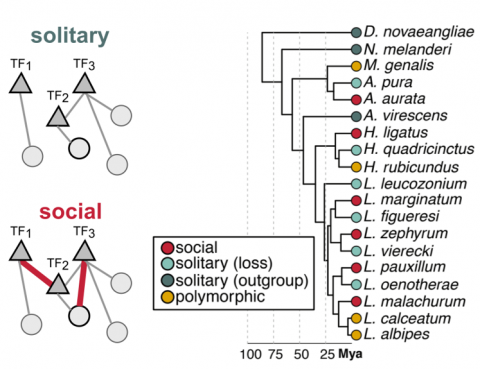
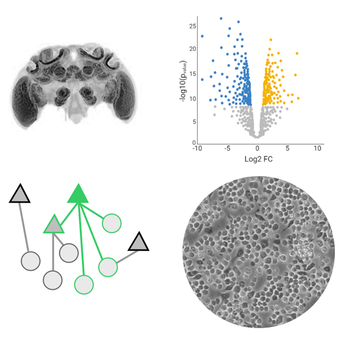
Mechanisms of intraspecific plasticity
In addition to variation across species, many species of sweat bees exhibit extensive behavioral plasticity within and across nests. The sources of this variation include both genetics and the environment, which acts upon the gene regulatory network (GRN) to result in a given phenotype. We are interested in understanding how differential utilization of GRNs leads to different phenotypes. In addition, we seek to manipulate the activity of GRNs to influence the phenotypes of lab-reared bees. We use a combination of genomics, transcriptomics, cell culture, RNAi, and other techniques to understand the mechanisms of plasticity within behaviorally plastic species of bees.
Characterizing behavioral plasticity
Halictid bees are incredibly diverse, and we've only just scratched the surface in understanding the natural history and behavior of a small number of species in this group. We are interested in better characterizing behavior within and across local species of halictids using standardized phenotyping assays. Understanding the natural history of this group will not only aid in our goal of understanding mechanisms of behavioral plasticity, but may also aid in conservation efforts for these important wild pollinators.
